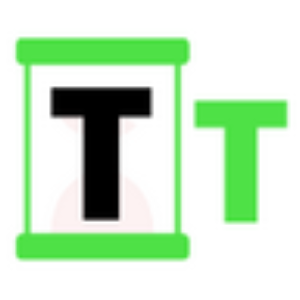Market Pulse
In the wake of recent market turbulence, major high-frequency trading firm DRW has issued a stark critique of crypto exchanges, alleging that they failed a crucial “neutrality test” during periods of significant volatility. This pronouncement from a prominent institutional player sends ripples through the digital asset ecosystem, reigniting long-standing debates about market structure, transparency, and the operational integrity of the platforms facilitating billions in daily trading volume. As the crypto market strives for broader institutional adoption, such condemnations underscore critical challenges that must be addressed for long-term sustainable growth.
The Core of DRW’s Allegations
DRW, a Chicago-based firm known for its extensive involvement in traditional and digital asset markets, claims that certain crypto exchanges exhibited a lack of neutrality when market conditions deteriorated. While specific examples were not detailed in the initial reports, the sentiment points to concerns where exchanges might have prioritized their own interests or those of affiliated entities, or simply buckled under pressure, thereby failing to provide a truly level playing field for all participants. This perceived bias or operational fragility during stress periods is a red flag for sophisticated trading firms that rely on predictable and impartial market mechanisms.
- Implicit Bias: Allegations suggest some exchanges may have acted in ways that benefited certain parties or their own books.
- Operational Strain: Critiques often arise from issues like system outages, order book instability, or unfair liquidation mechanisms during extreme price movements.
- Market Confidence: Such claims erode trust among institutional investors seeking robust and fair trading environments.
Understanding Market Neutrality in Crypto
Market neutrality, in the context of exchanges, refers to the principle that a trading platform should act solely as an impartial venue for buyers and sellers, without taking proprietary positions or favoring specific participants. This ensures fairness, prevents market manipulation, and fosters deep, reliable liquidity. In traditional finance, highly regulated exchanges adhere to strict rules to maintain this neutrality. For the often less-regulated crypto space, achieving and demonstrating such neutrality is paramount, especially as market participants grow in size and sophistication.
The “neutrality test” implicitly refers to how exchanges perform under duress – specifically, during periods of rapid price drops or surges. A truly neutral exchange would maintain stable operations, execute orders without undue delay, and apply its rules consistently to all users, regardless of market direction. Failure to do so can exacerbate volatility, create an uneven playing field, and deter the very institutional capital that the industry seeks to attract.
Implications for Institutional Participation
Institutional players like DRW bring significant capital, trading expertise, and a demand for high standards to the crypto market. Their critical observations carry substantial weight. If major exchanges are perceived as lacking neutrality or operational resilience during crashes, it poses a significant barrier to entry for other large firms. These entities require assurances of market integrity, robust infrastructure, and fair play before committing substantial resources. Without these assurances, the broader adoption of digital assets by traditional finance could slow considerably.
- Reduced Confidence: Institutional investors may hesitate to allocate capital to markets perceived as unfair or unreliable.
- Increased Scrutiny: Regulators may take a harder look at exchange operations, potentially leading to more stringent rules.
- Demand for Better Platforms: The critique could fuel the development of more robust, transparent, and institutionally-friendly trading venues.
Calls for Greater Transparency and Regulation
DRW’s critique aligns with a growing chorus of voices calling for enhanced transparency and clearer regulatory frameworks in the crypto industry. Many argue that without explicit rules governing market conduct, order execution, and conflict-of-interest disclosures for exchanges, incidents of perceived non-neutrality will continue. As the crypto market matures, the demand for safeguards akin to those in traditional finance will only intensify, pushing exchanges towards higher operational and ethical standards. This could involve stricter auditing, real-time market surveillance, and clear separation between exchange operations and proprietary trading arms.
Conclusion
DRW’s recent statement serves as a potent reminder that while crypto markets offer immense innovation, they are not immune to the fundamental requirements of fair and transparent operation. The “neutrality test” is a benchmark for market integrity, and perceived failures by exchanges during volatile periods highlight systemic challenges. Addressing these concerns through improved operational resilience, enhanced transparency, and potentially more robust regulatory oversight will be crucial for fostering institutional confidence and ensuring the long-term health and credibility of the digital asset economy in the years ahead.
Pros (Bullish Points)
- DRW's public criticism could pressure crypto exchanges to improve operational resilience and transparency.
- Such institutional scrutiny can accelerate the development of more robust and regulated trading environments, benefiting long-term market health.
Cons (Bearish Points)
- Perceived failures in market neutrality could deter new institutional entrants, slowing broader crypto adoption.
- Increased focus on exchange integrity may lead to more stringent and potentially restrictive regulatory frameworks.



